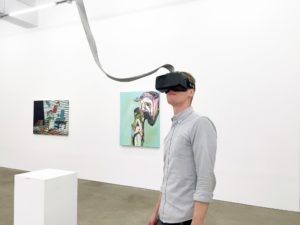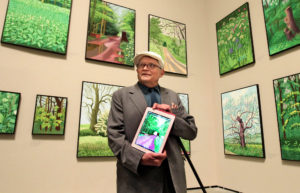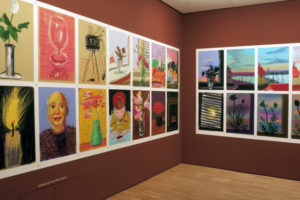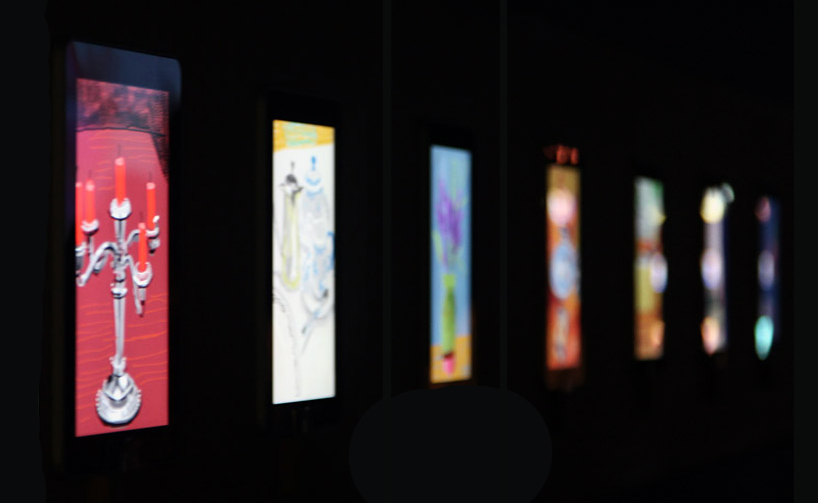Caitlin Allen discusses the iPad and its impact on modern art.
Digital technology is continually influencing and redefining what constitutes ‘art’, and developing an endless stream of new ways to express one’s creativity. Witness the increasing number of films, photographs, audios, projections – and even virtual reality goggles – filling and enlivening the gallery space. iPad art is one such innovation: it combines the ‘modern’ and the ‘traditional’, but it is still, effectively, draughtsmanship.

Art apps for iPads and even iPhones and smartphones began to surface around 2010. Today, there are countless apps available for download: Brushes, Tayasui, Art Set, Graphic, ASketch, Inkist, Procreate, The Apple Pencil… the list goes on. Simply click on the app and your tablet becomes a tabula rasa, leaving you free to draw or paint your masterpiece by moving your fingers around the touch screen. You can choose and change colours using the digital toolbox provided in the corner of the screen (as opposed to pigments on a separate palette in ancient times).
David Hockney is a much renowned enthusiast of iPad art. In his 2012 ‘A Bigger Picture’ exhibition at the RA, a whole room was dedicated to works constructed entirely on this medium: a bold series of landscapes he made using his preferred app ‘Brushes’. Martin Gayford recalls receiving a text from Hockney which read ‘I’ll send you today’s dawn this afternoon, an absurd sentence I know, but you know what I mean’ and later that day, ‘it duly arrived: pale pink, mauve and apricot clouds drifting over the Yorkshire coast…It was as delicate as a Turner, luminous as stained glass and as hi-tech as any art being made in the world today. Hockney had drawn it on his iPhone.’ New technology allowed Hockney to share his creations in a fast and immediate way, on the same day as he experienced that fleeting apricot dawn. Similarly, digital technology enables us to engage in these creative outbursts whenever we wish and wherever we are.

Hockney claims that iPad technology allows him to match colours and tones faster than ever before. Similarly, traditional oil painter-turned digital artist Kyle Lambert has noted that ‘the ability to pinch and zoom using mobile apps has given artists the ability to add really fine details to their paintings’. Another advantage of the iPad, according to Hockney, is that ‘you can’t overwork the surface because its not real’. ‘In watercolour’, he explains ‘about three layers are the maximum. Beyond that it starts to get muddy. Here you can put anything on anything’.
Yet, I still can’t help but wonder – is iPad art cheating slightly? Does it truly qualify as ‘art’, or is it a less skilled, less authentic version of painting? The painter does not make the colours themselves – in more traditional art, the alchemical transformation of pigments was a fundamental preliminary to painting, and helped the craftsman understand the relevance of his materials. The process of stretching a canvas, priming a surface with gesso, completing a giornata for a fresco, are all similarly abandoned; the sensory aspects of creating, like smelling the scent of the paint, are also left by the wayside. iPad art sterilises the experience: 21st century art is far removed from the romantic notion of the artist’s studio with its paint-splattered floorboards, plethora of palettes and array of brushes. Then again, times are changing: to undermine iPad art this way is perhaps relying on traditional, outdated notions of art practice.

A separate comment made by Hockney opens up another potential limitation of iPad art. He told Gaysford: ‘I draw flowers every day on my iPhone. Then send them to my friends, so they get fresh flowers every morning…I can also send them to 15 or 20 people’. As much as the prospect of receiving a daily bouquet of Hockney flowers fills me with envy, it seems that the thing Hockney is praising, the fact that it can be so easily circulated, detracts from its value as art. Who is getting the original version? Does an ‘original’ even exist? The concept of originals and copies start slightly to lose meaning with iPad art.
With these questions in mind, what does the future hold for this medium? It has been five years now since Hockney’s iPad art filled the RA. I remember wondering at the time whether this was the beginning of an art revolution, the start of a whole new movement. Yet, whilst it has gained some popularity, it has not taken off. There does not appear to be an abundance of famous artists following Hockney’s example. Then again, maybe it will serve as a useful tool for amateur artists. Sumit Vishwakarma, organiser of the Mobile Digital Art Exhibition in Palo Alto, sums up the role of iPad art accordingly: ‘iPad art is not here to compete with traditional painting and drawing on the canvas — it is just another medium to express the same creativity’.
For anyone interested in iPad art, get yourself down to one of the Live Art events, regularly hosted by Apple stores across London. Here, digital artists present their own iPad work and discuss the techniques used. They also encourage the audience to bring their own devices and get involved. Find out more details on the Apple website.
Featured image Hockney’s iPad art exhibition; image courtesy of designboom.com





